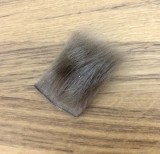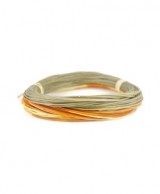The lifecycle of the Caddisfly (Trichoptera)
For the creation of artificial flies, which are very similar to natural ones, we set at your disposal the products and materials of the GVS Realistic Fly Ting System that shall enable you to create very realistic Caddisfly and concurrently challenge the water fauna during your outings to fish. Considering the almost complete similitude with the Natural Flies, it will be very easy for you to fool the fish. As a consequence, any capture thereof shall change into a successful challenge.
You can find here complete information related to the reason due to which Caddisfly are significant Flies for the Fly Fisher and you will furthermore know them better and you will be able to identify such.

Caddisflies are very popular bugs and they are some of the most often encountered and most abundant around waterways. They tend to lay their eggs in the last part of the day and in many cases they are a challenge for the fish.
Caddisfly Larvae remain on the bottom of rivers throughout the year, so that it is no longer necessary to mention how important they are for the nourishment of the fish population. This is the first life stage after the egg of the Caddisfly breaks open. They are usually closed by silk filaments made by the larvae, a sticky silk with residues, such as sand, stones and small wood pieces. The Larvae stick out their head and legs from the edges of their carcass to move. Not all Caddisfly Larvae use this protection technique; there are many other species using other types of protection, such as that of hiding among rocks and boulders nearby. You can actually encounter them most often below stones and logs on the river bottoms.
The stage of a Pupa of the Caddisfly is the final stage before the Larvae becomes an adult. Larvae often form small puff balls to stick to stones and/or river bottoms. They shall remain incubated here, preparing themselves for adult life. Caddisfly Pupa have an appearance similar to the adult bug, even if covered with a protection membrane, which often makes them shine. These pupa float in a short time on the surface of the water and become adults.
The Caddisfly Adult is a very important bug for the food of freshwater fish. You can easily identify this bug due to its Wings in the “shape of a tent”. They are somehow similar to moths and they are quite closely related to them. They have long antennas and they usually occur on the river at the same time. The Caddisfly Adult flies and he often swims on the surface of the water in order to lay its eggs directly on the bottom of the lake or river. They take with them an air bubble to be able to swim. This shall enable them to float quickly on the surface and lay their eggs. They can also simply lay their eggs on the water surface and leave them survive by themselves.
Life stages of the Caddisfly
- Egg;
- Larva;
- Pupa;
- Adult;
- Spent.












